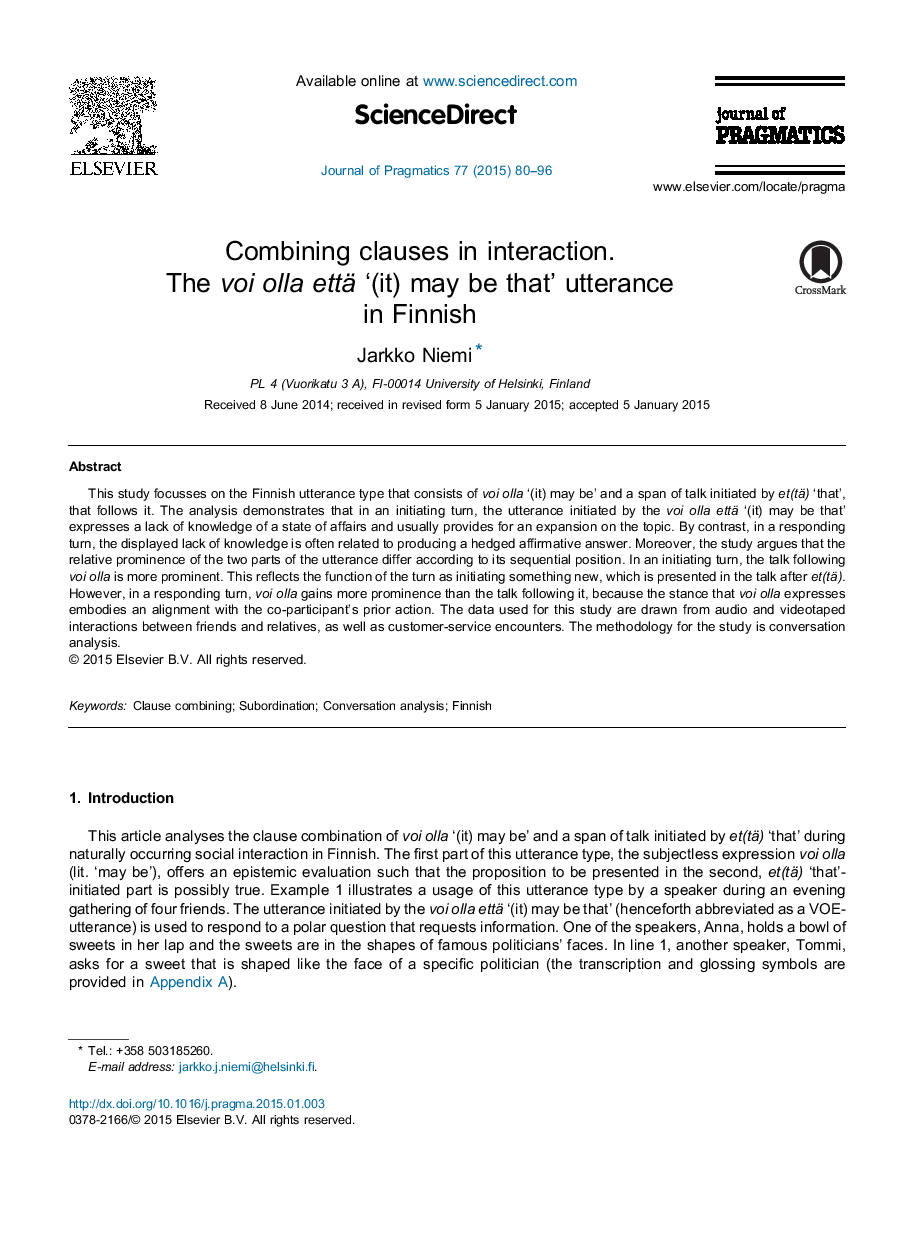| Article ID | Journal | Published Year | Pages | File Type |
|---|---|---|---|---|
| 7298078 | Journal of Pragmatics | 2015 | 17 Pages |
Abstract
This study focusses on the Finnish utterance type that consists of voi olla '(it) may be' and a span of talk initiated by et(tä) 'that', that follows it. The analysis demonstrates that in an initiating turn, the utterance initiated by the voi olla että '(it) may be that' expresses a lack of knowledge of a state of affairs and usually provides for an expansion on the topic. By contrast, in a responding turn, the displayed lack of knowledge is often related to producing a hedged affirmative answer. Moreover, the study argues that the relative prominence of the two parts of the utterance differ according to its sequential position. In an initiating turn, the talk following voi olla is more prominent. This reflects the function of the turn as initiating something new, which is presented in the talk after et(tä). However, in a responding turn, voi olla gains more prominence than the talk following it, because the stance that voi olla expresses embodies an alignment with the co-participant's prior action. The data used for this study are drawn from audio and videotaped interactions between friends and relatives, as well as customer-service encounters. The methodology for the study is conversation analysis.
Related Topics
Social Sciences and Humanities
Arts and Humanities
Language and Linguistics
Authors
Jarkko Niemi,
